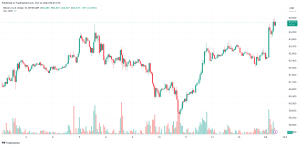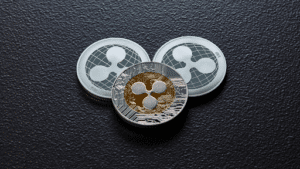
Both in terms of absolute value and as a store of value, the Dollar is clearly above the Euro, and despite today’s recovery that re-established parity in terms of value, the trend according to analysts is set to continue.
The dollar outperforms the euro, parity broken again
The 20th century was marked by, among other things, the rise of the dollar as the universal currency used for cross-border trade and as a store of value, this surpassed and replaced the pound in its role.
The US currency has performed +20% over last year, is at its highest level in 20 years, +30% against the Japanese Yen, which has returned to 1998 levels, +8% against the Chinese Yuan, and according to the Wall Street Journal index, the dollar has appreciated 13% against all currencies.
According to the IMF (International Monetary Fund), the US currency accounted for 59% of the world’s foreign exchange reserves in the first quarter, while in 1999, the year the Euro debuted, US dominance was 71%.
The dollar now accounts for 40% of world trade, four times the weight of the US while the euro accounts for only 20%, the yen for 9%, the pound for a rising 5% and the yuan for 2.9%, closing Canadian and Australian dollars up slightly but with still marginal slices.
One euro is worth less than one dollar, and other pretenders to the throne of the world reserve currency, such as the yen, yuan or even cryptocurrencies, have collapsed.
The energy crisis is the shakeup in terms of trade that favors energy exporters like the US specifically and punishes the currencies of importers, this combined with other factors is a tactical advantage for America.
Although it may pose some competitiveness problems in the long run, a strong currency helps to reduce inflation, and it is precisely rates that seem to be the crux of the situation.
Fed continues to raise rates
Ahead of a possible hike on US rates priced between 75 and 100 basis points, the European currency falls to 0.9976 on the US currency, down 0.40% while the exchange rate with the yen is 143.04 and the exchange rate with the pound 0.8761.
The next Federal Reserve and FOMC meeting is scheduled for the 20th of this week although it is thought it may slip by a day.
The meeting will be used to figure out the path of economic power revitalization and will be set against a complicated political backdrop of war in Ukraine, the fight against advancing China and high energy prices.
The next FOMC meetings will be crucial for central bank monetary policy and are scheduled for 1-2 November and 13-14 December.
Friday’s close showed us on the short term for the US dollar against the Canadian dollar a strengthening of the bullish phase.
The rally in the US currency is encouraged by the Fed‘s interest rate hikes, which have prompted investors to invest in high-yielding assets, and by the setback in Europe grappling with its biggest slowdown in years.
The lack of credible alternatives is being felt, the Euro is trudging along with sluggish monetary policy, the war in Ukraine and the energy shock, the British Pound is still reckoning with Brexit, the Yen is in free fall, and Japan continues to keep rates at zero as the country sinks into a housing crisis.
To date, America is the world’s largest producer of hydrocarbons, its companies enjoy good financial health, and although the US economy is being battered by inflation, it is becoming more refractory than its competitors thanks to timely monetary policy.
Members of the Organization of the Petroleum Exporting Countries, when energy prices rise, get richer and thus the US follows the same fate at the expense of Europe and Asian countries that get poorer.
In an environment of economic, political and monetary uncertainty, the dollar is the safe haven of the moment.
The dollar is currently more attractive
If the dollar is rising, it is because investors around the world are buying US stocks, perhaps in preference to German, French, or Chinese stocks.
As evidenced by the success and value of Google, Amazon, Facebook, and Apple (GAFA) over the past two decades, the US technological advantage is clear and allows it to invest, attract capital, and gather wealth, which makes the dollar go up.
The dollar is solid and so far crisis-free, but an upcoming change in currency regimes may not be as fast as the one between the British currency and the Dollar since new technologies allow some functions of reserve currencies to be separated allowing countries to establish autonomy in payments, for example without necessarily stepping on the toes of the US currency.
The Economist, in its article brings to light how two technological changes could undermine the role of the Dollar as the dominant currency.
So-called digital state currencies are gaining weight; China’s e-yuan now has 260 million users and has complete control over capital, which is necessary to maintain stability.
India’s UPI system has also grown as has Brazil’s Pix payments system, which has a user base of 126 million people to date.
In view of the fact that DeFi‘s technologies continue to improve, someday the role of the Dollar could be undermined but this is not the day, today the Dollar is appreciating more and more against the Euro in a trend that analysts seem to be ending at 0.80 to the Euro or with an aggressive turn of monetary policy even in the old continent by the ECB on the heels of that of the Fed.
The post There is no parity between the Dollar and the Euro appeared first on The Cryptonomist.






















